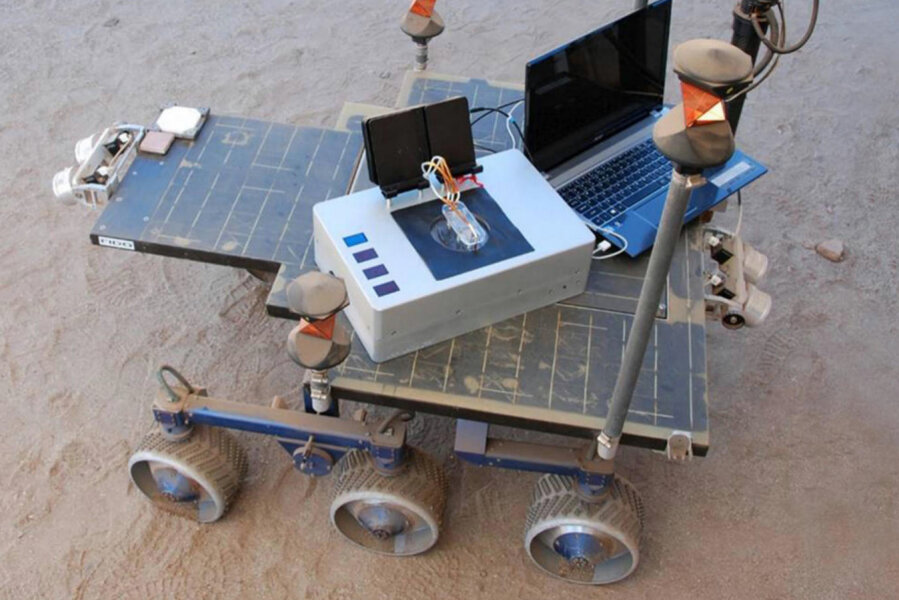NASA’s Chemical Laptop could help identify alien life
Loading...
In the Star Trekuniverse, people can locate alien life by waving a tricorder across the landscape of a newly-discovered planet. In real life, there’s the Chemical Laptop: a NASA-designed device that employs chemical analysis and could someday detect organisms on other worlds.
There may well be life in our solar system, buried in a glacier on Mars or in the ice on Jupiter’s moon Europa, and the Chemical Laptop could help scientists find it. The device takes a sample of liquid, such as melted ice, and mixes it with a special dye that clings to amino acids and fatty acids, which are important biological building blocks that can form proteins or cell membranes.
A laser then sweeps through the mixture to detect whether any organic material is present. If no liquid sample is available, the Chemical Laptop can boil solid material with pressurized water in order to imbue the water with molecules from the sample.
The Chemical Laptop will be reprogrammable, so it can perform different kinds of analyses. It will also be able to distinguish between naturally occurring amino and fatty acids and those that may have been biologically created.
Many molecules have a feature called “chirality,” which is similar to humans being either right- or left-handed. Amino acids created by microbial life are mostly one or the other (for example, those on Earth are mostly "left-handed") whereas those that form on their own in nature are evenly split between the two kinds. The Chemical Laptop can also measure the length of an acid chain, which gives clues as to what kind of life caused that chain to form.
The Chemical Laptop itself is about the same size as a regular laptop, but with a housing several inches thick inside which the chemical analysis components are kept. The device could be mounted on a probe such as a Mars rover and used to take samples from different sites on the surface of a planet or moon. NASA tested the Chemical Laptop last year at the Mars Yard, a simulated Martian landscape at the Jet Propulsion Laboratory in Pasadena, Calif., and the Administration is planning to test the laptop in the Atacama Desert in Chile next.
Assuming the tests are successful, the Chemical Laptop could be among the cargo sent to another world. NASA is planning a mission to Europa sometime in the 2020s to investigate an ocean of liquid water thought to lie a few miles below the moon’s crevasse-ridden surface. The Chemical Laptop could help scientists determine whether that ocean, or the ice above it, harbors microbial life.






